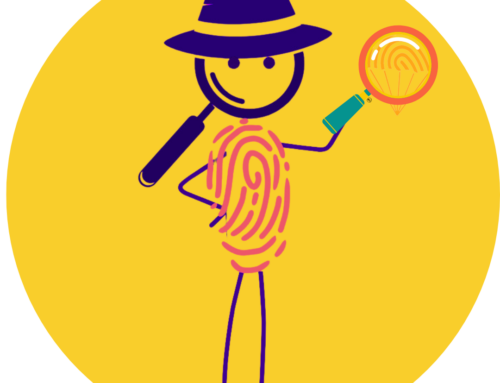As my kid waved goodbye today with a Celsius in one hand and Bubbl’r (for later) in the other, I figured it’s time for this post. I’ve been diving into the research about caffeine, ADHD, and the energy drink craze.
I have a TON left to research – check out this list of items billed as “energy drinks for kids;” I want you to have a start.
First I’ll unpack the mystery of caffeine’s tango with the ADHD brain, then I’ll shine a light on what the FDA says about kids and caffeine. The goal of this information is to help you build a roadmap for your family’s conversations about caffeine consumption and give you a starting point for your own research.
The Caffeine Connection
Stand up if you like your coffee in the morning. Stay standing if you need your coffee in the morning. I’m standing; are you?
Caffeine is one of the most well-known natural stimulants in the world. Because it acts on the central nervous system, many people claim that consuming caffeine helps boost their focus, energy, and alertness. Even mood. Just look at the t-shirt/coffee craze, and you’ll see the way popular culture speaks to the adoration of this drug.
Understanding the Mental Relationship Between Caffeine and ADHD
ADHD involves an imbalance of neurotransmitters in the brain – these are chemical messengers in the brain. In particular, research has found an imbalance in dopamine transmission in the ADHD brain, which is a chemical associated with good feelings, comfort, and satisfaction.
Caffeine can help to increase the levels and effect of dopamine in the brain. Since ADHD is linked to a dysfunction in the dopamine pathway, the logic follows that caffeine might be helpful for ADHD due to its dopamine-boosting effects. While much of the research points in this direction, the body of work is not large enough yet to come to conclusive results.
The Chemical Causation
How do caffeine and dopamine collaborate? Caffeine binds to the adenosine receptors (message receivers) in your brain, which play a key role in managing wakefulness and sleep cycles. By preventing adenosine from attaching to these receptors, caffeine effectively “blocks or masks sleep signals” boosting dopaminergic activity in the brain. Think of a little kid saying, “but I’m not tired!” As a result, this block in feelings of sleepiness and increase in good feelings can create sensations of increased focus, alertness, and motivation.
For some individuals with ADHD, caffeine consumption might enhance self-confidence, improve mood, and reduce fatigue, as their brains often seek dopamine through novelty and external stimuli. Since every brain and body is different, it is important that each person make their own decisions, based on how caffeine affects them.
How Does Caffeine Affect ADHDers’ Actions?
Some research on adults with ADHD suggests that caffeine may improve reaction time, vigilance, and logical reasoning. Consumption of caffeine was also associated with better focus on repetitive tasks and lower impulsive or risky behaviors. Animal studies have found that caffeine could be possibly incorporated as part of ADHD treatment. Based on findings, caffeine may help to improve symptoms of inattention and reduce any learning or memory impairments resulting from ADHD.
Research conducted on children with ADHD discovered that caffeine consumption improved planning and executive function, which encompasses time management, organization, and prioritization skills. Additionally, caffeine was also found to reduce symptoms of hyperactivity. Please consult with your physician, just as you would for any medication, prior to giving your child caffeine. Read on for why!
Currently, there’s a lack of conclusive studies investigating the long-term effects of caffeine on ADHD.
How much is too much?
The FDA and Mayo Clinic say that up to 400 milligrams (mg) of caffeine a day appears to be safe for most healthy adults. That’s roughly the amount of caffeine in four cups of brewed coffee, 10 cans of cola or two “energy shot” drinks. (Actual caffeine content in beverages varies widely, especially among energy drinks.)
Although caffeine use may be safe for adults, these sources caution that it’s not a good idea for children. They warn that adolescents and young adults need to be cautioned about excessive caffeine intake – and mixing caffeine with alcohol and other drugs.
Any amount of caffeine use can cause unpleasant side effects and may not be a good choice for people who are highly sensitive to its effects.
Kids, Caffeine, and the Energy Drink Craze
One of the initial signs I recognized regarding my neurodiversity—once I understood it as a sign—was my excessive caffeine consumption as a late teen and then into my adult years. Interestingly, the more critical the project or proposal, the less I slept, the less I ate, and the more caffeine I consumed.
Reflecting on this, I realize I was essentially inducing a state of hyper-arousal to prepare for the presentation. So it’s worth noting that if your kid is consuming 2-3 energy drinks a day, this can be a warning sign for more than just too much caffeine. Don’t panic, just check in with a health professional who can guide you to the right information.
New Food Category?
If your household resembles mine, with an 18, 16, and 13-year-old, energy drinks have practically formed their own food category. Although I appreciate having a non-coffee and non-sugary energy boosting* alternative for my teens, it’s challenging for me to stay informed about the various brands, ingredients, and caffeine content in the rapidly growing energy and fitness drink market.
I have found myself researching the various options to better understand what exactly my kids are consuming. It’s incredible how the market has evolved, offering so many choices that cater to different tastes and preferences.
Energy Drink Basics
We have two drivers, so I control what I can when it comes to their consumption, and I advocate for sugar free, and as many “natural” ingredients as possible. We have the below drinks in our pantry, with a couple of variations. For more detailed advice, reach out to a nutrition coach or registered professional to guide you.
- Alani Nu: A 12-ounce can of Alani Nu contains 200 milligrams of caffeine.
- An 8.4 fluid ounce serving of Alani Nu Mini Energy contains 100 milligrams of caffeine.
- Celsius: A 12-ounce can of Celsius contains 200 to 270 milligrams of caffeine.
- Bubblr: A bottle of Bubblr contains about 69 milligrams of natural caffeine.
The Problem With Serving Size
Here’s the Problem: A single serving of Celsius or Alani contains twice the recommended daily caffeine intake for teens. But both brands offer single serve powder sticks. My alternative: Add ¼ to ½ of the stick to 22 oz. (or your choice) of water, and you have the same great taste without the caffeine overload and with more hydration. Want fizz? You’re in control – simply adjust the water-to-sparkling-water ratio. We really like Target’s Good&Gather watermelon lime flavor. Watch your kid and your family members for these signs of too much caffeine:
Signs of Consuming Too Much Caffeine
- Too much caffeine can cause a variety of symptoms:
- increased heart rate
- heart palpitations
- high blood pressure
- insomnia or sleep disruptions
- anxiety
- jitters
- upset stomach
- nausea
- headache
At its core, I often feel that I have limited control over what my kids choose to consume outside our home, even beyond our discussions about caffeine. To address this, I engage my teens in conversations about being mindful of what they put into their bodies. We sit down together to read labels and explore the potential effects of caffeine and other ingredients. I encourage them to take the lead in these discussions, allowing us to discover together while seizing valuable teachable moments.
Because they are so busy in this stage of life, we explore alternative ways to boost energy, such as ensuring they get enough sleep, protein, and staying hydrated. It’s interesting how these small lifestyle adjustments can make a significant difference in their energy levels and overall well-being. This approach not only helps them make informed choices but also strengthens our bond as we navigate these decisions together.
I found this table to beverages and their caffeine amounts absolutely fascinating. You may find The Center for Science in the Public Interest a great resource to bookmark!
Yours in the journey,
Cara







